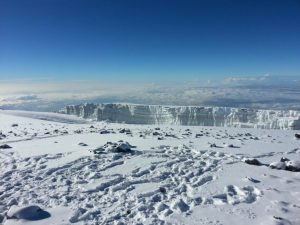Understanding Kilimanjaro National Park Weather
Mount Kilimanjaro, located in Tanzania, is Africa’s highest peak and a popular destination for hikers and adventurers from around the world. As with any mountainous region, the weather on Kilimanjaro can be unpredictable and variable. Understanding the climate patterns and factors influencing the weather on Mount Kilimanjaro is essential for a safe and enjoyable trekking experience.
Climate Patterns in Kilimanjaro National Park
Kilimanjaro National Park experiences a variety of climate zones due to its diverse terrain and varying altitudes. The park is characterized by five distinct ecological zones: the cultivated lower slopes, the rainforest zone, the heath and moorland zone, the alpine desert zone, and the summit zone. Each of these zones has its own unique climate and weather patterns.
The lower slopes of Kilimanjaro are typically hot and humid, with temperatures ranging from 70 to 90 degrees Fahrenheit. As you ascend the mountain, the temperature drops and the weather becomes cooler and more unpredictable. The rainforest zone, located between 6,000 and 9,000 feet, receives the highest amount of rainfall and is known for its lush vegetation and foggy conditions.
In the heath and moorland zone, which spans from 9,000 to 13,000 feet, the weather is cooler and drier, with temperatures ranging from 50 to 70 degrees Fahrenheit during the day and dropping below freezing at night. The alpine desert zone, above 13,000 feet, is characterized by arid conditions, high winds, and extreme temperature fluctuations.
At the summit of Mount Kilimanjaro, known as Uhuru Peak, temperatures can drop to below zero degrees Fahrenheit, with strong winds and the possibility of snowfall. It is important for trekkers to be prepared for these extreme weather conditions and to dress in layers to stay warm and dry.
Factors Influencing Weather on Mount Kilimanjaro
Several factors influence the weather on Mount Kilimanjaro, including the mountain’s proximity to the equator, its high altitude, and the presence of the Indian Ocean to the east. The mountain’s position near the equator results in a relatively stable climate, with no distinct seasons and temperatures that remain fairly consistent throughout the year.
The altitude of Mount Kilimanjaro plays a significant role in shaping the weather patterns on the mountain. As you ascend the mountain, the air becomes thinner and cooler, leading to a drop in temperature and changes in weather conditions. Trekkers may experience rapid weather changes, including sudden storms, high winds, and temperature fluctuations.
The Indian Ocean also influences the weather on Mount Kilimanjaro, as it can bring moisture and precipitation to the region. The prevailing winds from the southeast can result in heavy rainfall on the mountain, especially during the wet season, which typically occurs from March to May and October to December.
In conclusion, understanding the climate patterns and factors influencing the weather on Mount Kilimanjaro is essential for a successful trekking experience. If you are planning a trek to Kilimanjaro National Park, it is recommended to book a tour with a reputable operator like Sunset Africa Safari. For booking requests and more information, please contact info@sunsetafricasafari.com.


